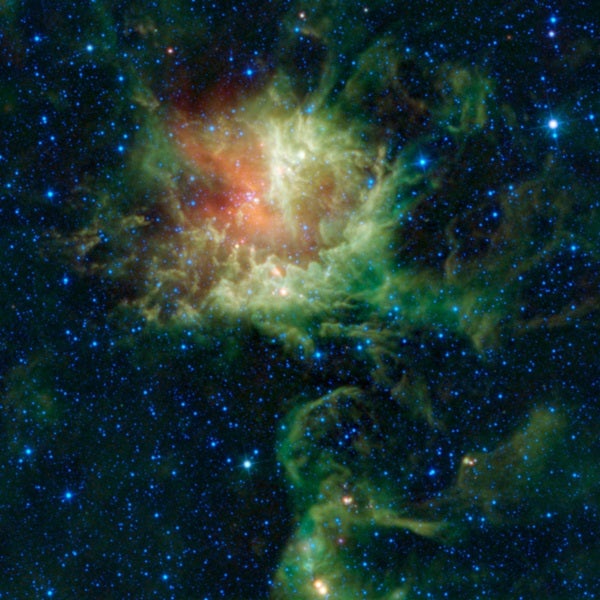The teeth are actually pillars where new stars may be forming. These structures were created when radiation and winds from massive stars in a central cluster blew gas and dust away, leaving only the densest of material in the pillars. The red dots sprinkled throughout the picture are thought to be the youngest stars still forming in cocoons of dust.
The Pacman Nebula is located 9,200 light-years away in the constellation Cassiopeia.
This image was made from observations by all four infrared detectors aboard WISE. Blue and cyan (blue-green) represent infrared light at wavelengths of 3.4 and 4.6 microns, respectively, which is primarily from stars, the hottest objects pictured. Green and red represent light at 12 and 22 microns, respectively, which is primarily from warm dust (with the green dust being warmer than the red dust).
The teeth are actually pillars where new stars may be forming. These structures were created when radiation and winds from massive stars in a central cluster blew gas and dust away, leaving only the densest of material in the pillars. The red dots sprinkled throughout the picture are thought to be the youngest stars still forming in cocoons of dust.
The Pacman Nebula is located 9,200 light-years away in the constellation Cassiopeia.
This image was made from observations by all four infrared detectors aboard WISE. Blue and cyan (blue-green) represent infrared light at wavelengths of 3.4 and 4.6 microns, respectively, which is primarily from stars, the hottest objects pictured. Green and red represent light at 12 and 22 microns, respectively, which is primarily from warm dust (with the green dust being warmer than the red dust).










